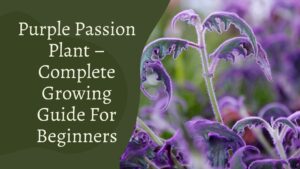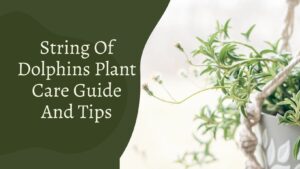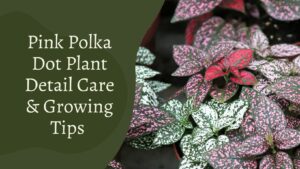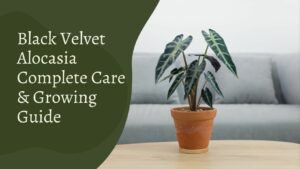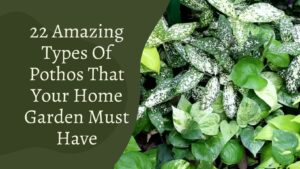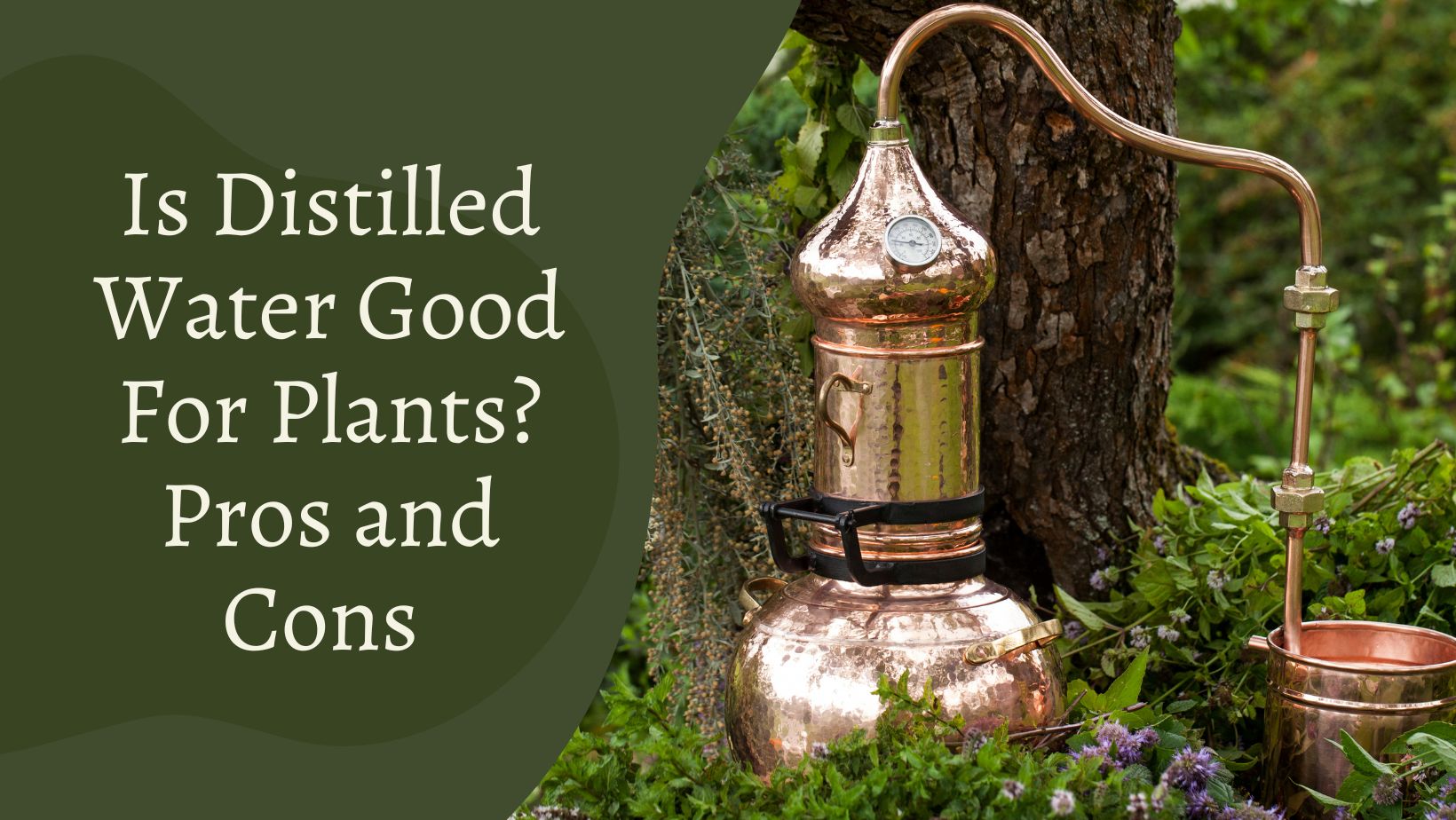
Is distilled water good for plants is common question of every gardeners Because minerals found in spring water are essential for the proper growing of your plants. It won’t deliver them with the nutrients they need to grow. For a long time, distilling water has been used to purify water. When water is heated to a high temperature, steam is produced, which is subsequently condensed to produce clean water devoid of a variety of naturally occurring minerals and pollutants.
Water that has been distilled, like water that has been cleansed or filtered, has a consistent composition. It is free of chemicals and salt, which would ordinarily prevent seeds from germinating, and agricultural experts recommend soaking seeds prior to germination.
Distilled water, as opposed to tap water, gives more consistent results, allowing for more predictable germination. The absence of minerals and other pollutants is responsible for many of the advantages of distilled water. Using tap water, even filtered water, in a CPAP machine, ultrasonic or evaporative humidifier, for example, might produce scaling and encourage bacteria development.
How to make distilled water for plant:
You can buy distilled water at most grocery shops or prepare your own if you want to try watering plants with it. You may get a distillation kit from a sports goods store or make it yourself using basic household supplies. Before you start manufacturing your own distilled water, brush up on your knowledge of the water cycle. When manufacturing your own distilled water, liquid water, water vapour, and condensation will all play a part.
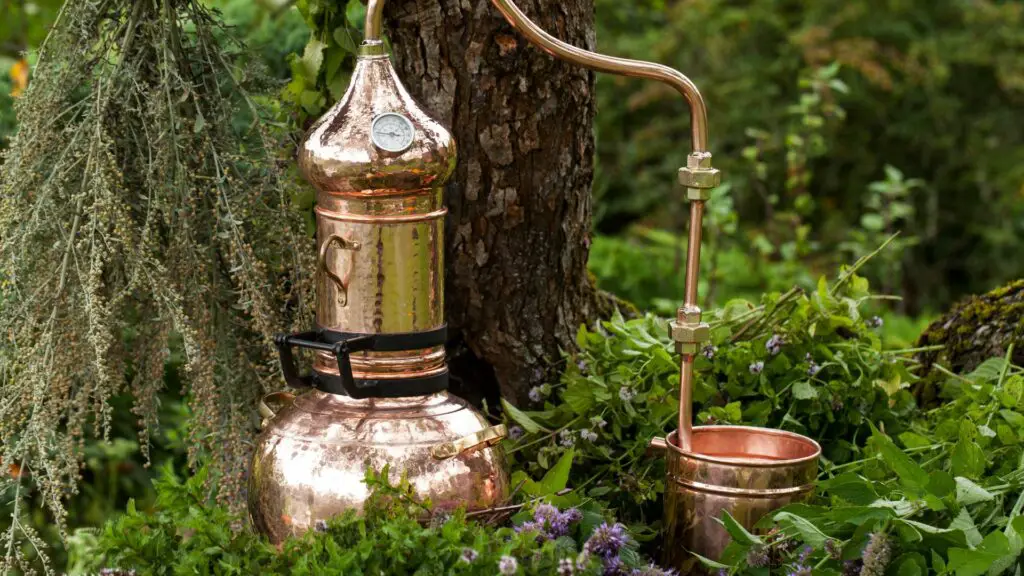
STEP 1:
Place the baking rack in the pot and fill it halfway with water. In the bottom of your 5-gallon stainless-steel pot, place the baking rack. Next, fill the pot halfway with tap water (or roughly two and a half gallons if you’re using a smaller pot).
STEP 2:
Place the glass bowl in the pot on top of the water. In the pot, place the glass bowl. It should float on the water’s surface. The baking rack will keep the bowl from coming into touch with the pot’s base. Make sure there’s enough room around the edges and top of the bowl for air to flow.
STEP 3:
Fill the pot with ice and place the inverted cover on top. Place the lid on the pot inverted (assuming the lid is concave when viewed from the bottom). Fill the cover halfway with ice cubes. When manufacturing distilled water, ice cubes aid the process by causing the water vapour to condense more quickly on the bottom of the lid. The distilled water droplets will then fall into the pot’s glass basin.
STEP 4:
Bring the water to a boil and keep an eye on the ice in the lid. Heat the burner to a medium or medium-high setting. It should be heated enough that the water in the pot simmers rather than boils. Return to your pot on a regular basis. If the ice in the lid has melted, pour it out and refill it with new ice (use oven mitts; the lid will be hot). Turning the tap water in the saucepan into distilled water will probably take 45 minutes or so.
STEP 5:
Allow for cooling before storing the distilled water. The procedure is finished when all of the tap water in the pot has evaporated, condensed, and been poured into the bowl as distilled water. Allow the distilled water to cool fully before putting it into bottles or using it right away.
Tap water includes various contaminants that are harmful to you and your plants, especially if it is not purified. Lead, chlorine, and microorganisms can all be found in tap water. These are detrimental to your plants and will cause difficulties if you water them with tap water on a regular basis.
Aside from these pollutants, the temperature of the water might have an impact on plant issues. The roots of your plants may be damaged if you irrigate them with ice cold water. Some (tropical) plants are extremely sensitive to temperature fluctuations, and cold water at their roots can cause them to die. Fortunately, there is a straightforward approach to solve both problems at the same time. That is what the next section will explain.
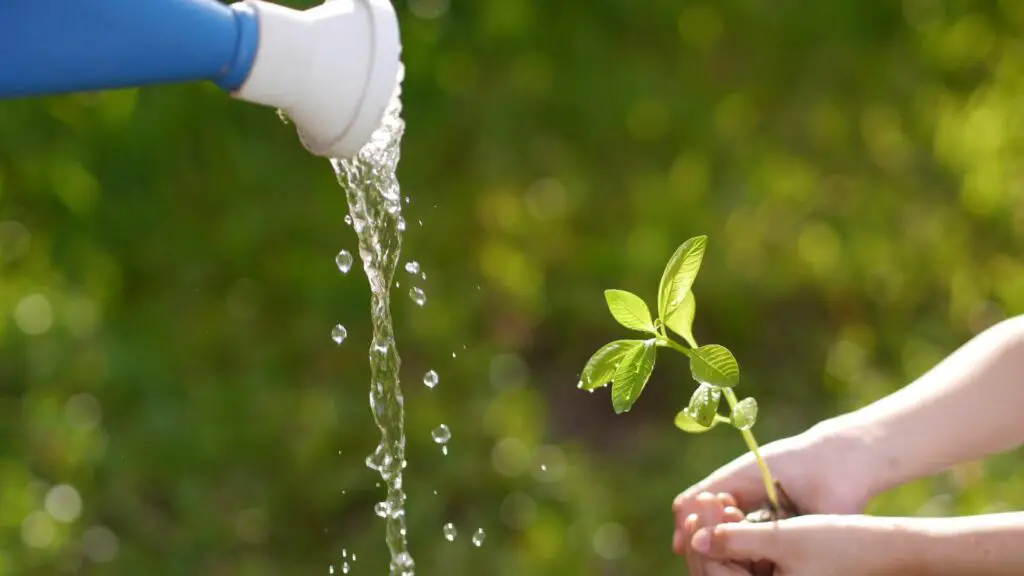
How can you water your houseplants using tap water?
We’ve learned that the finest sort of water to use to water your houseplants is distilled water. It isn’t, however, your sole choice. You may water your plants using tap water, but it will need some forethought on your side.
If you’re going to water your plants using tap water, make sure it’s as clean as possible. It’s also crucial to ensure that the water is not ice cold, but rather at room temperature. You must let tap water soak for 24 hours before using it on your houseplants. What exactly does this imply? It implies that you must arrange your watering schedule at least 24 hours ahead of time.
For example, if you wish to water your plants at 15:00 (3PM) tomorrow, you should fill up your watering can now. Allowing your water to settle in the watering can for at least 24 hours is a good idea. Most of the particles will drop to the bottom of your watering can if you wait for it to settle. Your water will warm up at the same time, until it reaches room temperature.
The water will have settled and at room temperature at the end of the 24 hours, just before you’re ready to water your plants. You’re considerably less likely to accidentally expose your plant to the pollutants in the water today. You’re also not exposing your plant to freezing temperatures.
Is filtered water good for plants:
Plants that are placed outside have access to a supply of clean, natural water – rain. The water from your tap, on the other hand, is not as pure. Chemicals, minerals, and even microbes will be present in trace levels, the quantity of which may vary based on where you reside. Some minerals contained in tap water can be useful to fragile domestic plants, while others might be toxic. Chlorine, which is frequently added to the water supply for sanitization, is one of the primary reasons.
It helps to clean the soil by destroying microorganisms that live inside it, much as it helps to clean your water. While this may appear to be a positive thing, these microbes really make your soil a better environment for plant roots to grow in.
Some plants are more susceptible to toxins than others, therefore filtered water is highly advised for such plants — peace lilies and bromeliads fall into this group, according to Savvy Gardening. The pH of your water can have an effect on the soil, which can damage plants that prefer acidic or alkaline soil.
The disadvantages of utilising filtered water for your potted plants include the loss of some minerals that are beneficial to your plants. While it appears that watering your plants with tap water would not hurt them, several types of plants will grow better if you use filtered water instead.
Is spring water good for plants:
Yes, of course. Water is required for plant growth. Plants thrive in any form of water. But a greater question is: how effective is bottled water for plants? The answer is that it is debatable. Some bottled water is beneficial to plants. Others aren’t quite as excellent. Spring water is the finest for plants among the several varieties of bottled water. Plants, on the other hand, do not benefit from (bottled) purified or distilled water.
The inherent minerals in spring water are beneficial to plants. They will develop more quickly and perform better. Similarly, distilled water will keep your plants alive and well. Purified water, such as distilled and deionized water, however, lacks the nutrients found in spring water. As a result, if you use it to water plants, they will not develop or thrive as well as if you used spring water.
Is purified water good for plants:
Reverse osmosis (deionization) or distillation have been used to purify bottled water. Bacteria and dissolved materials are removed using these treatments.
Purification techniques frequently remove beneficial minerals as well. However, there are certain businesses that filter water in phases. A procedure in which minerals are reintroduced to the water is one of the stages.
The expense is one of the most significant disadvantages of utilising this method. Second, your plants will benefit less if there are less minerals in the soil.
Furthermore, some filtration processes incorporate chemicals or artificial components into your water as a result of this. As a result, your plants may experience stunted development.
Will distilled water kill plants:
No, in my experience. I’ve never seen a plant die after being watered with distilled water. Most plants, on the other hand, thrive when watered with distilled water. However, if the plant is already stressed in any manner, I would not advocate using distilled water to water it. If a plant is withering, for example, you can resuscitate it using tap water.
Another factor to consider is that distilled water is mineral-free. As a result, if you’re watering your plants with distilled water, you might want to supplement with fertiliser or another form of plant food. Fertilizer is required by plants that require more nutrients than distilled water can provide.
What to use water plants:
Irrigation via Drip
According to xeriscaping specialists, drip irrigation distributes just the perfect quantity of water to each plant’s roots without overwatering the entire garden. One or additional dumper spray aquatic onto the desiring origin sphere as the tube weaves its way through the garden and through each plant. A horticulturist doesn’t smooth have to be homebased to guarantee that the scenery and plot obtain sufficient aquatic to flourish without degenerative a droplet by using a timer linked to the spigot. The tubing is hidden by a layer of mulch, which also helps to conserve water by preventing moisture loss from the earth.
Hose for a soaker
It’s simple to water a large flower or vegetable garden. Soaker tubes are frequently level with a ration of fleabags at the highest, or they’re completed of recyclable resources that let aquatic to seep available all the way down the tube’s length. When a soaker hose is extended length ways a racket of plants or potatoes, the rootballs of the plants are consistently watered.
To Gardeners can cover the soaker hose with mulch or bury it under 1 or 2 inches of ground to ensure that the water soaks into the soil before evaporating. This method avoids water from surging up into the leaves of the plant, which might cause illness. Even if the gardener is away, a regulator guarantees that the plot is soaked on period, every while.
Planters that Water Themselves
Self-watering pots, whether created from scratch or purchased from a garden centre, are a great method to keep a ampule patch under control. Most self watering pots include two units: a top pot for earth and plants and a bottom reservoir for aquatic and fertiliser. Absorbent movement pulls into the planters, or the plant’s roots grow down into the water and nutrition mix. depending on the planter’s design. Drill a trench fleabag hooked on the wall of a temporary tank just overhead the proper water equal to avoid sinking your vegetations. Add more aquatic and fertilizer as wanted to maintain your ampule plants lime.
Bottles of Water
A sophisticated aquatic sphere or a repurposed, lengthy necked mauve or aquatic bottle put hooked on the earth of a bottle herbal distributes liquid ended a lengthy period of time. Seal the aquatic sphere or flask halfway with aquatic or a aquatic and manure mix, then place the globe’s or bottle’s neck in the soil. Water gently pours into the planter, moistening the roots. Bit one or 2 tiny slums in the jug cover and room it on the jug before tapping the collar into the dirt if the water seeps out too rapidly.
Ollas from the past
Ollas are unglazed clay jars that have been customised for gardening by Native Americans. In Spanish culture, they have a lengthy history. After the olla has been filled with water and hidden in the plot, just the highest of the pot is visible. As it softly enters the earth, the water in the garden soaks up the plants. Even in warmer weather, the jar’s small neck avoids excessive evaporation. To prevent mosquitoes from developing in the olla, some horticulturists shelter the entrance with a part of space shade or a pillar in mosquito-prone sites.
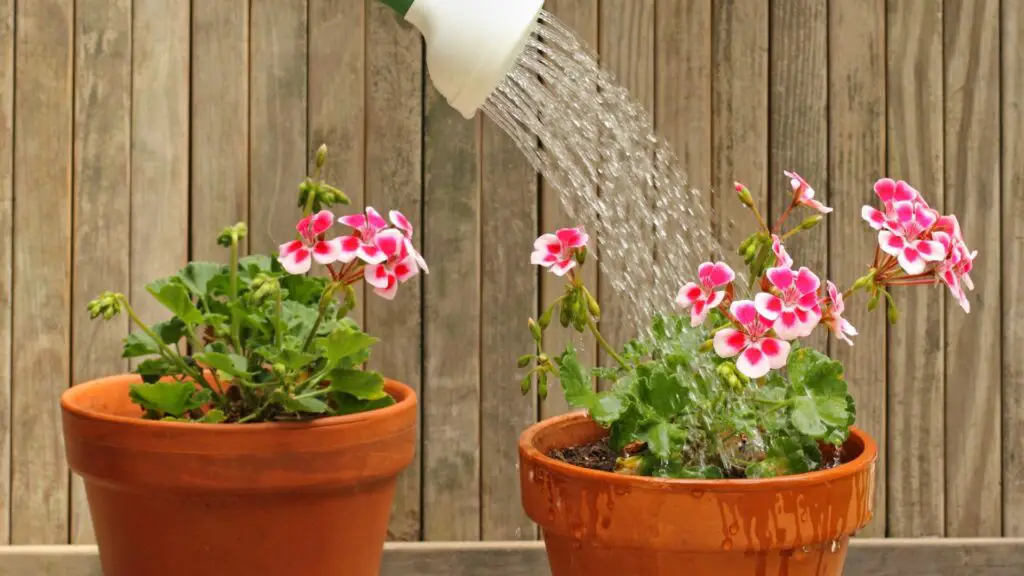
Do plants grow better with tap water or distilled water:
Plants that are often seen in the house do not require distilled water in order to grow. In reality, if you use tap water that has been left out overnight to let the chlorine to dissipate, most plants will be OK. Some plants, however, prefer or require distilled water.
I won’t go through that list again because we’ve already discussed it, but in general, I believe that plants watered with distilled water do not grow as well as plants irrigated with tap water. The different minerals in tap water aid in the fertilisation of plants.
Of course, there are certain exceptions. Aloe Vera is one plant that prefers distilled water; it’s quite easy to get an aloe vera plant, so start there if you’re unsure about your plants’ water requirements.
Cacti and other succulents are another example; they thrive in dry conditions, thus using distilled water helps to better mimic their native environment.
You may need to give your plants a mineral or supplement to compensate for the absence of minerals in the water if you opt to water them with distilled water. Epsom salts are an excellent option since they include magnesium and sulphate, which are both important plant nutrients.
Which plants needed distilled water:
While tap water is good for many plants, it can be harmful to more fragile varieties, especially if you live in a region where the water is high in chalk.
The following is a full list of houseplants that require distilled water:
- Venus Flytrap (Dionaea Muscipula)
- False Shamrock (Oxalis Triangularis)
- Cast Iron Plant (Aspidistra Elatior)
- Parlour Palm (Chamaedorea Elegans)
- Lucky Bamboo (Dracaena Sanderiana)
- Dragon Tree (Dracaena Marginata)
- Peacock Plant (Calathea Makoyana)
- Prayer Plant (Maranta Leuconeura)
- Fishtail Palm (Caryota)
- Peace Lily (Spathiphyllum)
- Kentia Palm (Howea Forsteriana)
- Ti Plant (Cordyline Fruticosa)
- Areca Palm (Dypsis Lutescens)
- Spider Plant (Chlorophytum Comosum)
- Aloe Vera
Distilled water vs purified water for plants salt
Purified and distilled water are both beneficial to your health and are almost identical. The key difference between the two is that filtered water does not always remove all of the beneficial minerals contained in water, but distilled water does. It’s also crucial to note that the process of distilling water uses a substantial amount of energy, making it slightly environmentally detrimental. You’ll save a lot of energy if you employ the reverse osmosis method.
It is advised that you use distilled water if you want the purest water possible. Purified water, on the other hand, is a better option if you want to consume clean, healthy water. Both forms of water are beneficial to your health as long as you eat a well-balanced diet. If you’re looking for a means to purify your drinking water, you may either distil it or utilise the reverse osmosis method, which involves passing the water through a semi-permeable membrane. You should have access to clean and wholesome water regardless of whatever choice you choose.
Conclusion
Though you can sometimes water your plants with distilled water, we don’t advocate doing so on a regular basis because it lacks several essential minerals. Watering your yard and plants with regular tap water is always a good idea for their health!
Finally, there are two methods you may employ to water your houseplants. There is nothing better than being able to collect and store rainwater if it is possible. However, distilled water, which is chemical-free and ideal for plant water, is the next best alternative. Furthermore, there are times when you will not be able to use both of these alternatives.

Hi This is Maria, We are a team of gardening enthusiasts with a passion for gardening. We have tried to bring you tips and advice enabling you to grow and maintain a healthy and beautiful garden. We Hope You Find it Useful.

